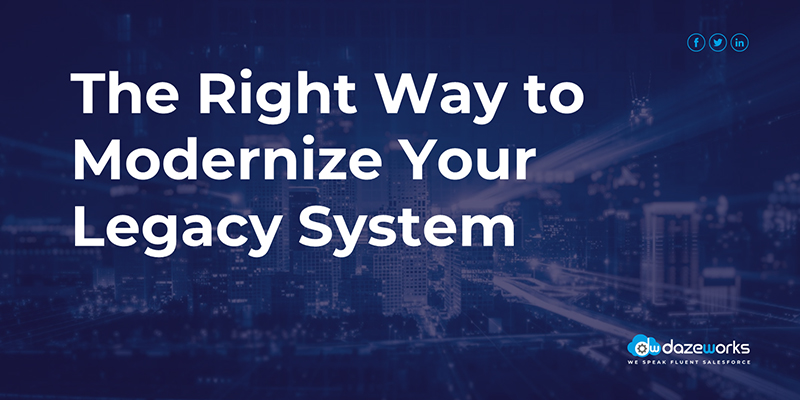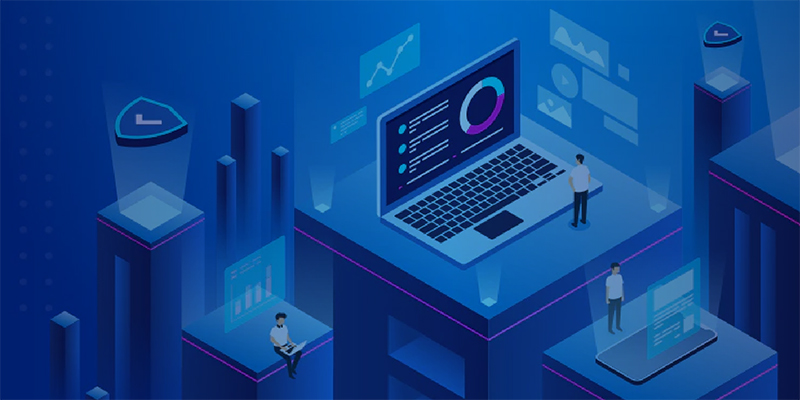
The Right Way to Modernize Your Legacy System
minutes read
Gone are the days when business processes were basic and expectations were limited. The way the business world works is evolving and legacy systems are unable to match up with the changes. This is why there is a dire need to modernize the legacy system. In this blog, we cover everything you need to know about application modernization to make an informed decision.
What is Application Modernization?
Application modernization is the process of replacing a legacy system with a modern platform architecture. The transition process can vary based on your current legacy systems and organizational challenges. Additionally, business goals that are driving digital transformation also impact application modernization.
When we talk about the modernization of applications, it’s more than merely replacing your legacy systems. There are different strategies to migrate, update and optimize the existing legacy system and turn them into relevant, modern architecture.
Why There’s a Need to Modernize Legacy Systems?
Lack of Proper Data or Insights
Modern applications come with in-depth data insights, advanced reporting metrics, and other such elements to extend verifiable data and support important business decisions. Legacy systems cannot keep up with massive data flow and may not be able to identify or resolve errors.
Security Risks
Considering that legacy systems are inherently older technology and are not supported by manufacturers or vendors, there are security risks to be concerned about. Moreover, legacy systems don’t have regular maintenance, updates, and patches that are necessary to stay safe in the digital environment. On the other hand a modern architecture such as Salesforce will offer your regular maintenance and updates and ensure that you stay on top of your game at all times.
Inefficiency
The rapid advancements in technology are paving the way for newer and better business practices to increase productivity and results. However, legacy systems fail to keep up with these changes, thereby hampering efficiency. For instance, unlike modern applications, legacy systems are not equipped to handle various data sets due to customized integrations.
Updating a legacy system stems from the fact that the IT realm prioritizes agility and the older system cannot keep up with technological evolution. Companies sticking with their legacy systems isare understandable since they are important for day-to-day operations which is why modernization is such a vital task. The process ensures that functionalities that are relevant are retained while boosting the overall system’s performance.
Furthermore, business executives and IT managers need to evaluate the cost of maintaining the old legacy systems and compare it to the costs of migrating to a modern application system. While an important criterion, cost shouldn’t be the only determining factor. It is a strategic decision wherein customer expectations should be paramount.

Technologies That Help Modernize Applications
Containers
These packaging methods are used for deploying and running software units in the cloud. Containers ensure that applications are packed lightweight and consistent across cloud, desktop, and on-premise architecture. They help with data scalability and portability.
The Cloud
Migrating the legacy application to the cloud is a standard step in modernizing applications. The cloud ecosystem provides a plethora of options such as private, hybrid, and public to lower costs, improve agility and boost scalability.
Orchestration and Automation
There is a serious need for workflow automation to reduce the time spent on redundant tasks. An efficiently executed automation can set up repetitive processes to perform on their own, whereas orchestration automates the various tasks and creates a workflow.
Microservices
Typically, legacy platforms are built on self-contained, single-tier, monolithic platforms. One of the main drivers of modernization is acquiring agility to cater to the changing expectations of employees and customers. Microservice prioritizes API-linked services, enabling companies to select customized solutions to ensure scalability and keep up with expectations.
The Right Approach to Modernize Your Application
Evaluate Your Current Legacy Systems
This evaluation aims to determine whether or not the existing legacy application caters to the needs of the business. If the system fails to keep you competitive, it’s time to update it.
Highlight Key Challenges
The next step is to refine your legacy systems to meet the user’s expectations. For that, you need to highlight the bottlenecks for both customers and employees. This is the step where you segregate what aspects of your legacy software works and what doesn’t. This way you get a clear picture of what application modernization options will work best for your business.
Streamline the Architecture
When you are modernizing the system, focus on the functionality that truly matters. Opt for a microservices architecture to make sure there is product scalability. Moreover, ensure that the latest applications are compatible with the current tools that your business uses.
Documentation is Imperative
From the outset, create internal processes or coding standards to avoid making the same mistakes that you did in the present solutions. Documentation makes your software easy to understand and maintain.
Plan Legacy Retirement Accordingly
Your new system may function efficiently in the beginning, but you cannot remove your legacy system all at once. Archive the solutions so that you can easily access them whenever needed. Make sure that all the elements of the new system are running properly and then plan to retire the legacy system.
Conclusion
A legacy system is an outdated software or hardware system that is still in use. While the system may be functional, it lacks scalability. Using the old system will not enable you to connect to new applications or solutions. Applications modernization allows you to stay updated and get the most out of digitalization.
While this transition comes with its own set of risks, it can help improve your business processes and boost efficiency. Considering the distinctive operations and processes of organizations, there needs to be a unique modernization approach to make the transition valuable and worthwhile. Therefore the crux of the matter lies in understanding what your business goals are and then bringing transformations that can cater to them.
